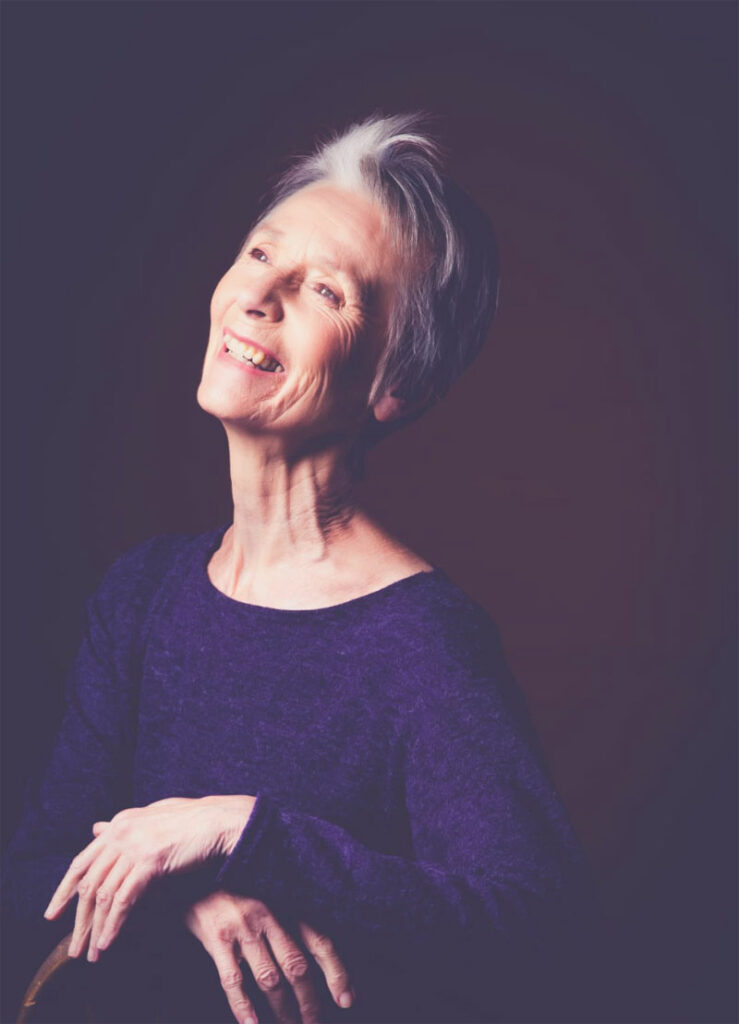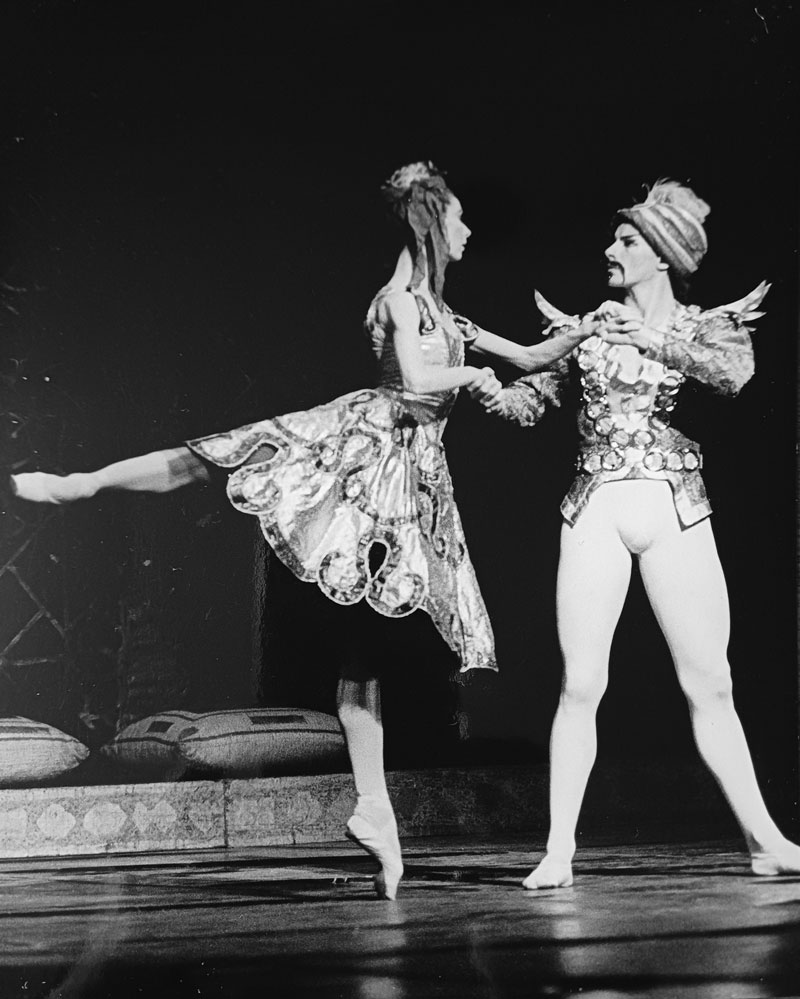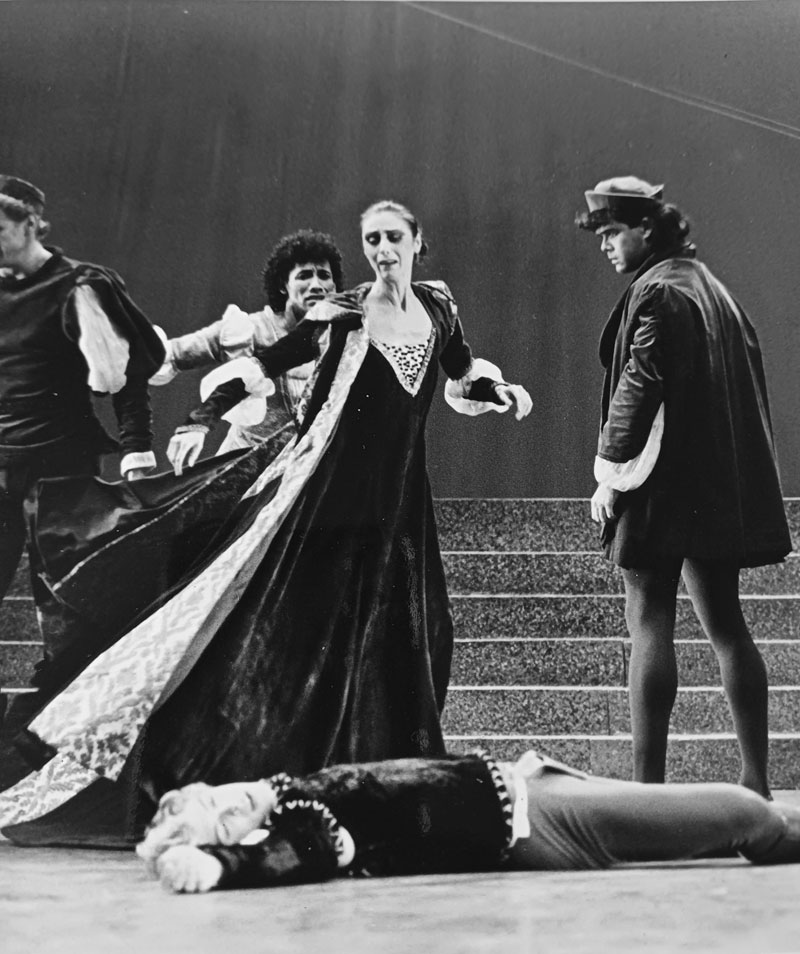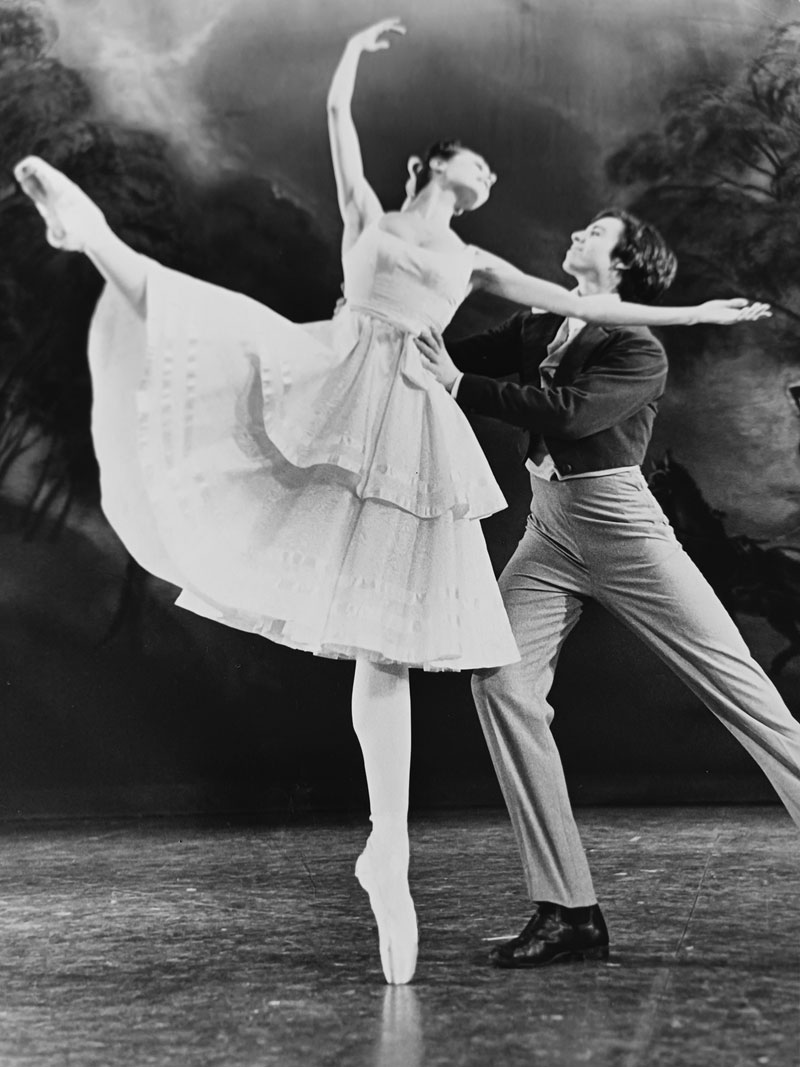Bristol-based Alexandra Pickford was formerly with the Royal Ballet Company and English National Ballet and has danced with some of the great stars, including Rudolph Nureyev and Margot Fonteyn. Here she reflects on her dancing career.
My life as a ballet dancer spanned the globe, taking me from Bristol to London, touring across the UK and venturing as far as the USA, Australia, Europe, and even China. Along the way, we met fellow dancers who had endured hardships during the Cultural Revolution in remote Chinese villages. I spent three and a half years in Croatia and six and a half years in South Africa. Those were very happy years.
The Royal Ballet and English National Ballet
My journey in the world of ballet began with The Royal Ballet Company, where I honed my craft. After dancing with The Royal Ballet as a student, fate handed me an opportunity when another dancer was injured, allowing me to step into her place.
These days ballet companies typically tour with either one full-length ballet or a triple bill, performing five or six times a week with an eight-hour day. During my first season with The Royal Ballet, from September to Easter, we carried a repertoire of 14 ballets, including full-length productions and triple bills.
Touring was gruelling. We had to buy food for the day, arrive for class at 9.40am, rehearse until 1pm, take a one-hour lunch break, rehearse until 4pm, and then rehearse again until 6pm. Afterwards we’d snack, clean our pointe shoes, check costumes, apply makeup, and arrange our hair in the ballet’s historical style. Then we’d warm up again for a 7.30pm performance after which we’d need to prepare again for the following day. It was a relentless routine with 12 and a half hour days, six times a week. Sundays were often reserved for travelling to the next city.
Tears were not uncommon, especially among the women who had more demanding roles, but we supported one another. My energy was boundless, but my fellow dancers were quick to tell me off for slamming dressing room doors. This habit stayed with me; I never shut doors to this day.

Evolution as a dancer
My career began in the Corps de Ballet at The Royal Ballet School, starting as a Court Lady and eventually graduating to roles like Swans, Willis (ghostly unmarried maidens), and Shades (ethereal maidens in the underworld). Our director in The Royal Ballet Company skilfully arranged the stage for productions like Swan Lake and La Fille Mal Gardée, ensuring that the Corps would dress the stage while the soloists danced. This approach became part of my stagecraft, even as I moved to other companies. I also learned never to sit or eat in my costume, a habit instilled during my early days.
Our director used to despair that the public weren’t open to new dance works and showed new and different works and championed new choreographers to encourage them. The English National Ballet’s current production of Giselle is certainly a step forward in this direction.
Encounters with dance legends
I danced with Fonteyn and Nureyev many times in my ballet career. While I was still at The Royal Ballet School, during the second act of Giselle Nureyev allowed Fonteyn to drop to the floor right beside me. A partner is always chivalrous, but this was shocking. We were playing frightening ghosts and were not supposed to move, but I couldn’t help but glance in their direction, breaking character for a moment.
I never saw this happen again. Nureyev and Fonteyn were very close. Nureyev would rage at her but Fonteyn always kept her cool and understood his youth and impetuosity.
Fonteyn guest-starred with our Royal Ballet touring company and was the only ballerina who fulfilled her commitments, which wasn’t always the case with other ballerinas.
I was privileged enough to dance with Nureyev once as the Countess in his production of The Sleeping Beauty. He never took his eyes off me during our time on stage together. It left me wondering if he saw a kindred spirit in me. I also had the opportunity to portray Carabosse, the wicked fairy, in Nureyev’s Sleeping Beauty production.
The Corps danced once with Fonteyn and Nureyev in Grenada, but in the middle of the first act, the orchestra stopped. To my surprise, at the front of the stage Fonteyn and Nureyev were remonstrating with the posse of photographers who were snapping when asked not to. They stopped the photographs and we carried on. Fonteyn and Nureyev could not allow unvetted photographs of them on the front pages of the world’s newspapers.
Most memorable performances
Some of the most cherished memories from my career involved performing in outdoor settings during the summer months with The Royal Ballet and English National Ballet. We toured Europe for 10 weeks with Fonteyn and Nureyev with The Royal Ballet, representing Britain in Portugal and enjoying royal treatment from the Portuguese embassy. We performed in unique venues, including a bullring in Lisbon.
Our flights with Spantax Airlines (which we nicknamed Tampax!) were not without drama – it was common for flames to stream from the aircraft wings due to residual fuel, and one of our number was once carried off the plane in fear. We also succumbed to what we called ‘Barcelona Bum’, experiencing vomiting, sickness, and exhaustion. Despite these challenges, dancing at the Alhambra Palace Gardens in Granada stands out as one of the most beautiful experiences of my career.
Beyond ballet
Since ballet gave me up, I’ve taken on various roles as a fitness teacher, yoga instructor, massage therapist, and water exercise teacher, which still allow me to show off! But apart from trying to save the environment all on my own, retirement left me missing the theatre.
I participated in a show called Once Upon a Time at the age of 65 and later joined Gerry’s Attic Dance Company, which eventually led to an invitation to join Untold Dance Theatre at 73. Performing twice a year wasn’t enough for me, and that’s when I decided to create my own opportunities.
I organised a workshop/show of interest, collaborating with mature dancers and actors to craft performances rooted in life experiences. This inspired me to create Bluffing Your Way In Ballet, a history of ballet told through the fascinating stories of the stars of each period. ‘Bluffing’ is my story – when I die all my experiences as a dancer and human will go off into the ether, so I wanted to give people and idea of what it was really like to dance professionally.
The evolution of ballet
Reflecting on how ballet has evolved since when I was dancing, recent BBC programmes have shed light on concerns around body image and the rejection of dancers with the ‘wrong’ body type. I was so lucky not to have trouble with weight gain and I bless my parents’ body types for this. But in the 1960s and 1970s, dancers were chosen for their special personalities and bodies were seen as suited to specific roles, such as a shorter and stronger physique for Coppelia or Titania or longer and leaner for the Swan Queen and Sleeping Beauty. My director in the Royal Ballet used to say that half the audiences consist of men, and they like to see women on stage, not stick-thin spiders!
Dancers today are expected to be highly flexible with slim legs and arched feet, often leading to a homogenised look, which can lead to a loss of dramatic tension of movement, and sometimes we just see high legs and gymnastics. In my day each woman in The Royal Ballet was chosen for their difference and all the women were beautiful and different in their own way. I looked on in wonder at the start of my career.


Lessons from ballet
Ballet has taught me invaluable life lessons. The challenges and discipline of ballet instilled practical and organisational skills, the determination to achieve artistic goals, and the ability push on through tiredness. It has encouraged me to keep up my fitness and continue learning about life and art.
If I’m going on stage for a challenging solo, with my heart thumping in my chest from nerves, I’ve learned to focus on the audience’s perspective. They don’t want to see fear; they want to enjoy the performance. Nervousness is really excitement. I encourage aspiring dancers to find a mentor who can provide guidance and support, as I wish I’d had during my career.
What’s next
My journey continues as I reach out to collaborate on new projects. After a successful dance project in Leeds, I’m embarking on a performance project with Rachel Achol de Grarang, celebrating our extensive dance careers in African Dance and Ballet, respectively.
Additionally, I’m planning a one-woman show that will offer a glimpse into the reality of being a ballet dancer in the 1960s, 1970s, and 1980s, and even in old age. While dancers today may not endure the same gruelling hours as we did, the passion for dance endures, and I’m excited to share my story with others.
Alexandra’s Seizing the Day Company: facebook.com/groups/seizingthedaycompany


